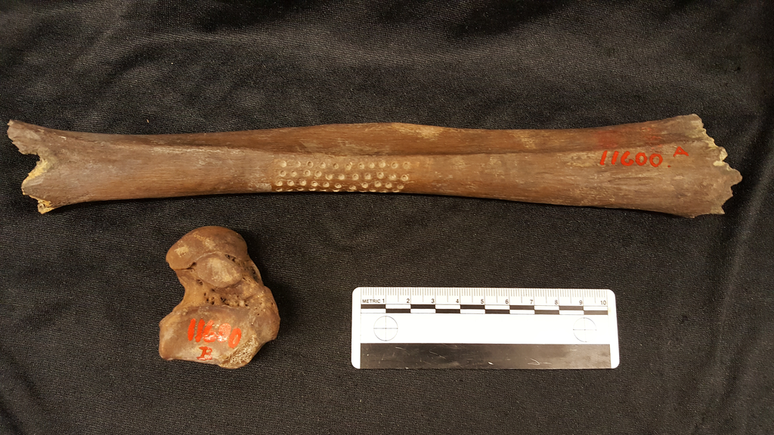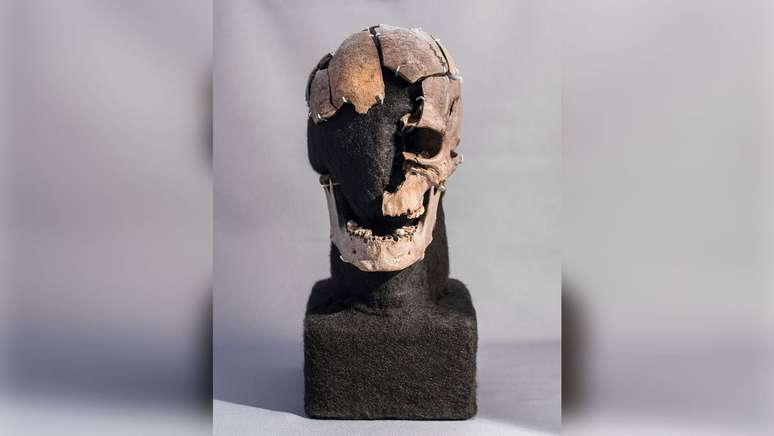One of the oldest murder mystery cases in the world, the subject’s body was found in a swamp in Denmark: DNA helps reveal his story
It is not uncommon to see death cases that are difficult to solve, even when the best investigators are working on them. The older the case, the harder it is to solve – now imagine a case that is more than 5,000 years old! Believe it or not, scientists have discovered more about the death of a “swamp mummy“known as the Vittrup Man.
- The mystery of the swamp where ancient corpses do not decompose
- The true story of the preserved body of the ‘Masturbator of Pompeii’
The remains of the famous body consist of a partial skeleton recovered from a swamp in northern Denmark in 1951. At first little was known about the owner of the corpse, the only certainty was that your death it had been violent before the body was lost in the marshy ground.
The secrets of the Vittrup Man
To the forensic conclusions from the body indicated to science that the subject in question was involved in something that led to his death about 5,200 years ago, ending up in a swamp in the city of Vittrup, today Denmark. His remains consist of the right ankle bone (talus), the lower part of the left tibia (tibia), the jaw and pieces of the skull.

To top it off, a wooden club was found next to the body holding up a classic “Who killed Odete Roitman?”. The last thing known was that the man died after being shot eight times in the head between 3,300 BC and 3,100 BC
He ended up becoming a swamp mummy, or bog body, which are very well preserved corpses from the European Neolithic thanks to the boggy conditions. These deaths are generally believed to have ritual significance, as many cases show bone malformations that indicate some significance to the deceased. The Man of Vittrup is different because of the violence of his death.
Thanks to DNA, experts from the University of Gothenburg revealed more details about the subject’s curious history: the genetic material present in the enamel of his teeth indicated the presence of strontium, carbon and oxygen in the form of isotopes, proving that he would have grown on the coast of the Scandinavian peninsula.

The origin was confirmed by comparing Vittrup Man’s DNA with that of others Mesolithic people Norwegian and Swedish. At some point in his adult life, he would have become a farmer, as isotopes and proteins in his teeth show a change in diet.
As he aged, he switched from eating marine mammals and fish to farm foods such as goat meat, grains and dairy products. The individual apparently originated in a hunter gatherer society, but moved to an agrarian society in Denmark.
This could have happened thanks to a greater migratory tendency towards the country or, as scholars believe, as part of the trader’s work or as a consequence of a life in captivity, ending up integrating into local society.
In any case, the analysis shows that the level of exchange between the Mesolithic and European Neolithic was broader than previously thought: the study is considered the most detailed and comprehensive in terms of time conducted on an inhabitant of Northern Europe at the time.
Source: PLOS One, EurekAlert!
Trends on Canaltech:
- Xiaomi lists the first phones that will receive HyperOS
- The video shows the construction of the Pharaonic city measuring 170 km in the desert
- Dell launches the new XPS 16 in Brazil at an exceptional price
- MWC 2024 | Nubia Flip 5G is the cheapest foldable phone in the world
- A ring of fire is expected to form in the Atlantic Ocean
- MWC 2024 | Samsung introduces wearable cell phones, flexible screen speakers and more
Source: Terra
Rose James is a Gossipify movie and series reviewer known for her in-depth analysis and unique perspective on the latest releases. With a background in film studies, she provides engaging and informative reviews, and keeps readers up to date with industry trends and emerging talents.





-1h85c9gp09quo.png)


